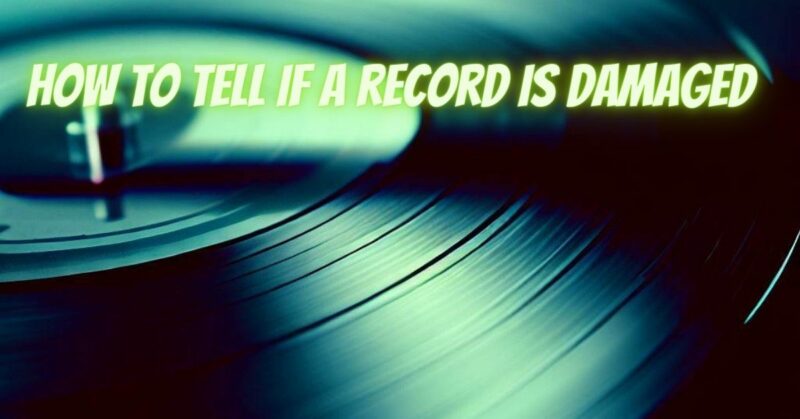Vinyl records have made a remarkable comeback in recent years, captivating music enthusiasts with their warm sound and nostalgic charm. However, as with any physical medium, vinyl records are susceptible to damage over time, which can affect their audio quality and overall condition. In this article, we will explore how to identify signs of record damage and provide tips on preserving your vinyl collection for years of enjoyable listening.
Common Signs of Record Damage
- Visible Scratches and Scuffs: Scratches and scuffs on the surface of a record are the most apparent signs of damage. Light surface marks might not severely impact sound quality, but deep scratches or numerous scuffs can cause audible pops, clicks, and distortion during playback.
- Warping: Warping occurs when a record’s surface becomes uneven, causing the vinyl to curve or buckle. Warped records may skip or produce inconsistent playback as the stylus struggles to track the groove properly.
- Groove Wear: Over time, repeated plays and improper handling can lead to groove wear, where the record’s grooves become shallower. This results in diminished sound quality, loss of details, and increased surface noise during playback.
- Crackling and Popping Sounds: Excessive crackling and popping sounds during playback are indicative of a damaged record. These noises are often caused by dust, debris, or accumulated residue in the grooves.
- Skipping: If the stylus consistently skips or jumps during playback, it can be a sign of significant damage, such as deep scratches or warping.
- Mold or Mildew: Improper storage or exposure to moisture can cause mold or mildew to develop on the record’s surface. These fungi can permanently damage the vinyl and affect sound quality.
Preservation Tips for Vinyl Records
- Proper Storage: Store your records vertically in a cool, dry place, away from direct sunlight and heat sources. Storing them horizontally or under heavy pressure can cause warping.
- Handling with Care: Always handle records by their edges and center labels to avoid leaving fingerprints or oils on the playing surface. Fingerprints and dirt can degrade sound quality and increase surface noise.
- Cleaning: Regularly clean your records using a soft, anti-static brush or a record-cleaning solution to remove dust and debris. Avoid using harsh chemicals or abrasive materials that may damage the vinyl.
- Use Inner Sleeves: Invest in anti-static inner sleeves to protect your records from scratches and dust. Avoid using paper sleeves, as they can generate static and leave paper residue on the vinyl.
- Maintain the Turntable: Keep your turntable in good working condition. Ensure the stylus is clean and replace it when necessary. Check and adjust tracking force and anti-skate settings to prevent unnecessary wear on your records.
- Store Records Separately: Avoid stacking records on top of each other to prevent warping and potential damage to the vinyl surface.
Vinyl records are cherished for their rich sound quality and nostalgic appeal, but they require proper care and handling to preserve their condition and longevity. Identifying signs of record damage early on can help you take appropriate measures to mitigate further deterioration. Regular cleaning, proper storage, and gentle handling are key to maintaining your vinyl collection’s pristine condition. By following these preservation tips and paying attention to the signs of damage, you can continue enjoying the authentic and timeless experience that vinyl records provide for years to come.


